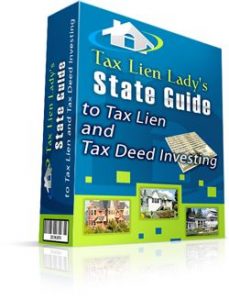This content is protected against AI scraping.
Here are 7 steps that you can follow to protect your retirement and start growing your wealth!
Step 1: Start Contributing to a Self Directed IRA or 401(k)
If you have a 401(k) with your employer that’s good, but not as good as if you had a self-directed IRA or solo 401(k) that you can control. With a true self-directed retirement account you have control and can invest in almost anything you want to, including real estate. I am not a retirement account expert, but I have interviewed a view retirement account specialists over the last few years. And I’ve learned enough to have open a SEP IRA for myself and for my husband.
You have to have your own business to have a SEP IRA, and you cannot contribute to a SEP if you are contributing to a 401(k). But a SEP IRA allows you to contribute a lot more per year than an individual IRA. I recommend that you talk to a representative from an IRA custodian about opening a true self-directed IRA that gives you control over your investments, so that you can open an account and start funding it. If you need help finding a self-directed IRA company, there are 3 that I have worked with that you can check out: IRA Services Trust, Equity Trust Company, and CAMA Plan.
Step 2: Focus on Your Goals
What are your goals for investing? It’s important that you know what your main goal is before you decide what you will invest in. It’s important to know your timeline. If you’re investing for immediate income, than tax liens would not be a good investment vehicle for you. Some investments are short term and some take longer to produce the desired result. How much profit do you want and how much risk are you willing to take? Higher profit usually comes with a higher risk. What I love about tax lien investing is that you can get higher profit without extremely high risk. Do you need to keep your investments liquid, which might be the case if you are retiring soon, or have some short terms goals that you need to meet? Get clear on what your goal is for investing and then you can choose an investment vehicle that fits your goal.
Step 3: Map out Your Investment Strategy
Once you know what your goal is and you’ve decided on your investment vehicle, then it’s helpful to map out a strategy. What exactly will you invest in? Where will you invest? How often will you need to add to your investment?
With tax lien investing for example you may want to pick a state to invest in. Most states will have tax sales at one time of the year, so you can plan how much money you will invest and when you will be investing. Then, depending on which state you invest in, you may also need to plan on when you will be paying the subsequent taxes which will be added to your lien(s). You?ll also know when the redemption period will end and when you’re likely to paid on your liens and can reinvest your profits, which brings us to steps 4 and 5?
Step 4: Stick With One Strategy Until You See Results
Ok, so you’ve started investing, and you may even have spent some money getting educated as to how to make money using a certain investment strategy. But now you’ve just heard about another investment that sounds even better than the one that you’re doing, so you drop everything mid-stream and buy another program to learn another investment strategy that supposed to make you rich. Wrong move!
If you keep jumping ship to try the next newest get rich quick scheme, you’ll never finish anything that you start, in which case you’ll never make any money. Stick with one thing until you see results, then if the results aren’t what you expected, then you can look elsewhere. But don’t expect miracles, remember, if something sounds too good to be true it probably is. Look for investments with realistic – not pie in the sky results. If you?re satisfied with the profit from your investment, then you’ll want to go on to step 5?
When I had tax liens redeem there was always something to spend the money on, bills, college tuition for one of my kids, or taxes to pay on real estate. But for your money to grow, you need to re-invest your profit. Spend the capital investment if you need to, but take your profit and reinvest it as soon as you have the opportunity. One way that I finally started doing this was to invest through a self directed IRA instead of with after tax money. I still do some investing outside of my self-directed IRA but at least half of my investing is through my retirement account. That way I know that when tax liens redeem all the money will be re-invested and I won’t be tempted to use it. So how do you know whether you should invest with IRA money or after tax money? That’s where step 6 comes in?
Step 6: Strategize With Your Accountant to Maximize Your Tax Situation
Don’t wait until tax time to sit down with your accountant or CPA. I usually like to talk to my accountant before the end of each year and have a strategy session to see where I?ll stand come tax time. There are things that you can still do even after the year is over to minimize your taxes or maximize your tax return – like contributing to your self-directed IRA. You can contribute to your retirement account through the date you file your tax return and have it apply to the previous year to lower your income and the amount of taxes you have to pay.
But some things have to be done by the end of the year. For instance if you know that you’re going to owe a lot of taxes, you might want to pay outstanding bills and make tax deductible purchases before the end of the year rather than wait until the new year. Or, if you know you are going to have a bigger tax dept next year you might want to wait and spend the money after the first of the year. Find a good accountant that can help you make the most of all the legal ways to minimize your tax dept.
Step 7: Protect Your Assets with a Trust
For this step you will need to talk to a good asset protection lawyer and it will cost you some money to open a trust account and have your assets transferred to a trust that will protect you from a law suit or judgment. You never know what can happen in the future and it’s better to be protected than to be open to have everything that you have worked for taken away from you.
Also if anything happens to you, you won’t have to worry about your loved ones. Your trust will live on and your assets will be transferred to your beneficiaries without having to pay inheritance taxes. There is a reason why the wealthy have trusts. I am not an expert in this at all, but I can recommend an attorney who is. Tim Berry is an attorney who specializes in asset protection.
Bonus Step 8: Take Care of Your Body and Spirit
“What good will it for a man if he gains the whole world but forfeits his soul? Or what can a man give in exchange for his soul?” Matt 16:26
Sometimes we are so busy trying to make ends meet or trying to get ahead and be successful that we forget why we are doing it. All the money in the world did not help Steve Jobs when he died of cancer. Fortunately for Mr. Jobs, he enjoyed an accomplished life in which he contributed much to society and was able to enrich is own life and that of his family. But what about you, will you work hard to amass enough money to retire comfortably only to find out that you will not be around to enjoy your it? What are you doing for your health?
And what about your spiritual welfare? What will become of your soul when you leave this world and go to the next? Have you spent any time thinking about why you are here, what your true purpose is in this life and what awaits you in the next? What a shame it would be to have all the wealth you want now and then leave it all behind with nothing to show for it. To have done nothing to lift your fellow man, or to have made this world a better place.
If you’re interested in growing your wealth with tax lien investing in 2013, go to www.YourTaxLienInvestingCoach.com and find out more about Tax Lien Lady’s Inner Circle coaching program.




By Lilya January 3, 2012 - 10:02 pm
Happy New Year to You and Your Family!
And again, Thank You Joanne for your tremendous support & consideration!
I love/enjoy reading and learning from you, – Thank You.
By Leah January 1, 2012 - 7:25 pm
Happy New year Joan. Thank you for all your help.
By S Roberts January 1, 2012 - 4:16 pm
Happy New Year to all!! Thanks Joanne for kicking the New Year with such informative info!!
By Jeffery Butler January 1, 2012 - 2:39 pm
Hello Joanne:
Thanks…I made it to you page. This is valuable information.
Happy New Year,
Jeff (:
By Stephen Zacker January 1, 2012 - 9:39 am
Happy New Year Joanne! Thank you for your help this last year. I want to open up a Self-directed IRA soon. You stated that you have worked with IRA Services Trust, Equity Trust Co., and the CAMA Plan. Which one of the three would you recommend. I’m worried that the fee structure will eat a lot into any profits. Thank you.
By Joanne January 1, 2012 - 12:28 pm
Hi Stephen,
I think that the one with the lowest fee structure is IRA Services Trust, and they allow you to set up a check book control with an LLC. That will cost more money to set up but it’s always nice to have the option to do that later if you want to.
By K.Mkrdichian January 1, 2012 - 8:55 am
Happy New Year to the tax lady and her staff…..Thank You For All your words of wisdom and suggestions and motivational words…..
thank you for being so kind and so generous…….
HAPPY 2012 NEW YAER.
By Joanne January 1, 2012 - 9:31 am
It’s been my pleasure, I’m happy to be able to help!!